Colombia will be on many people’s radars after their recent tournament performances.
They come into this Olympics looking to impress further after receiving many plaudits for competing with the giants of the sport and exceeding the expectations of many over the last three years.
Colombia have reached the latter stages of the previous three major tournaments that they have participated in.
In 2022, they hosted Copa América and came agonisingly close to winning the competition, losing in the final to Brazil.
Then, in the 2023 World Cup, they gained attention on a global scale.
Impressive displays, including a victory against former World Champions Germany, was part of their journey that led to them reaching the quarter-finals, where they narrowly lost to England.
Most recently, in the 2024 Gold Cup, Colombia reached the quarter-final stage again, where they lost to hosts and eventual champions USA.
Colombia have benefited from a great deal of consistency from their technical staff.
Former manager Nelson Abadía spent eight years working in a variety of roles across both the youth and senior sides.
They are now led by his former assistant, 38-year-old Ángelo Marsiglia, who is taking charge of his second major tournament as head coach.
This steadiness of the side, coming under the same guidance for years, has allowed the players to be well-prepared to head into major tournaments.
Maybe now more than ever, this will be vital to the team’s success.
Drawn in a group with hosts France, current Olympic gold medallists Canada, and regulars in the competition, New Zealand poses a real challenge in Paris.
This tactical analysis will look to pinpoint what elements of Colombia’s game will allow them to be a success in this year’s tournament and what will hinder them from continuing their excellent performances at major competitions.
Predicted Starting XI
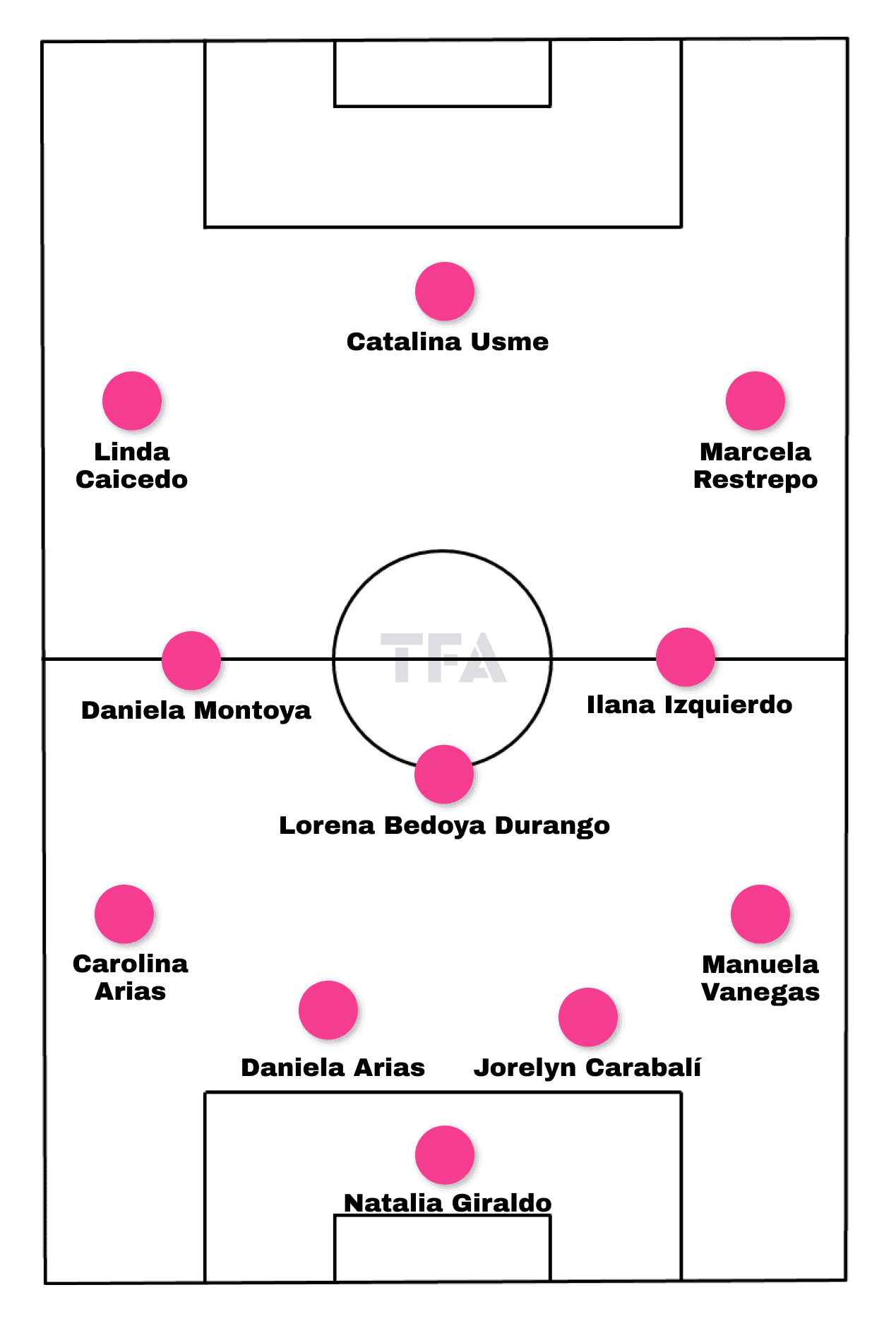
With the strength of Colombia’s competition, I believe they will line up in a traditional 4-3-3 formation.
Over the past twelve months, this has been one of Marisglia’s most used formations, particularly against stronger nations.
He has, however, opted to use a 4-2-3-1 and a 4-4-2 on occasions.
The traditional 4-3-3 formation usually means that one of Colombia’s many exciting attacking options misses out on a starting spot.
However, it does provide a great deal of balance to the team, ensuring that adequate defensive cover is provided without restriction on some of Colombia’s most offensive players.
21-year-old Natalia Giraldo will start as Goalkeeper.
Having gained her first taste of being a starting goalkeeper at a major tournament in the Concacaf Gold Cup, she will come into this tournament more prepared.
She will, however, have competition from veteran Sandra Sepulveda, whose experience will be a great aid to the squad both off the pitch and on it if called upon.
The defence will likely consist of Manuela Vanegas at right-back, a centre-back partnership of Daniela Arias and Jorelyn Carabalí, and Carolina Arias starting at left-back.
The back four are all capable on the ball, and both full-backs have a real desire to push forward and support the attack.
In midfield, Lorena Bedoya will start as the deepest midfielder.
The Real Brasilia midfielder will act as a destroyer and provide protection to the defence.
Alongside her will be captain Daniela Montoya and Ilana Izquierdo.
Both 8s are assets to their team through their competency in possession and their work rate off the ball.
The front three has the most chance of varying throughout the tournament.
Real Madrid’s Linda Caciedo is certain to start on the left wing and will cause trouble to every defence.
Through the middle, Colombia have a variety of options.
All-time record goal scorer Catalina Usme will lead the line, providing not only a threat in front of goal but also an ability to link play.
Chelsea forward Mayra Ramírez and Manuela Paví of Athletic Minero will be different number 9 options to come off the bench.
Marcela Restrepo will start on the right wing, having become a consistent feature of Colombia’s first 11 over the past 12 months.

Colombia’s squad has much of the key make ups to have tournament success.
They have experience in vital positions in the team, with Montoya, Daniela Arias and Usme all having well over 70 caps.
This is mixed with players who are at the peak of their powers who are currently in their prime years, with the likes of Carabalí, Bedoya and Restrepo all falling between the ages of 25 and 28.
Colombia also possesses young, up-and-coming talents, such as Caceido and Izquierdo, who will be amongst the best young players at the Olympics.
Attacking Phase
When Colombia look to build up from the back, they have the capability to mix it up.
They have the ability to progress the ball through the thirds.
However, they aren’t afraid to go and try and find Colombia’s furthest forward players, with Usme and Ramírez both possessing the ability to hold up the ball.
The greatest hindrance to Colombia’s build-up is the technical ability of individual players, more so than the tactical set-up.
Essential positions such as the goalkeeper and number 6 are filled by players who don’t have the technical qualities to progress play, particularly under pressure.
Bedoya is only successful in 44% of her offensive duels, meaning she can succumb to pressure from pressing opposition.
Goalkeeper Giraldo also has had mixed success when playing forward, completing only 50% of her long passes and 57.7% of her forward passes.
The unreliability of these key positions in the build-up can cause real problems for the team and put them under serious pressure.
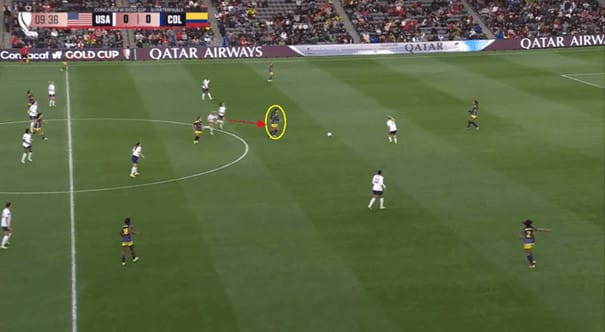
In this example, Bedoya receives the ball from her defence.
She fails to scan critically as the ball travels towards her.
She then panics under pressure and plays an under-hit pass, which allows the opposition to latch onto the ball and eventually win a penalty during the counterattack.
Despite Colombia having players that can be targeted due to their technical deficiency, they also have numerous players who can be utilised effectively as they build up play.
In the gold cup, both Montoya and Izquierdo had a forward passing accuracy of above 80%. This is particularly on show when Colombia play with a 4-2-3-1 and line up with both players as 6s.
However, both players playing as 8s helps Colombia as they often look to penetrate into the final third.
Both midfielders are able to make runs from deep to try and get on the ball deep into the opponent’s half.
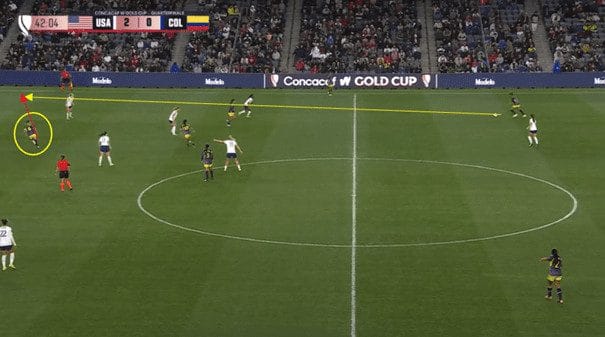
Here, we see Montoyo looking to break into the final third with a run from deep.
This causes problems, and despite the opposition winning the first ball in this situation, Montoya quickly gets onto the second ball and works a shot for herself.
Dynamic movement is a key element of Colombia’s attack.
Front players such as Caceido, Usme, and Paví love to drift into different positions and can very easily interchange with one another.
Often, the wide forwards will come inside and look to be direct, attacking the goal.
The inverted nature of the wide forwards gives space for full-backs to provide attacking support.
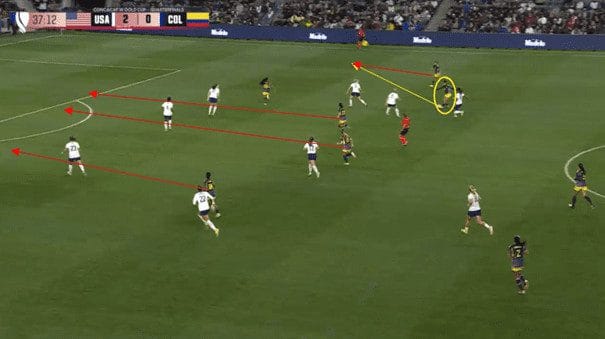
This plays out in the example above.
Usme has pulled out wide and taken up the role of the right winger.
After she drives inward, she plays a ball into the final third for her overlapping teammate, Carolina Arias.
Colombia flood the box, and Arias finds Izquierdo with a low cross.
Defensive Phase
Colombia are a well-organized team, and you can see clearly from their structure when defending Marsiglia’s demands on his players.
Off the ball, Colombia work immensely hard to maintain compactness when pressing.
In the Gold Cup, they had the fourth-highest PPDA of 6.07.
Colombia’s pressing strategy is the same regardless of what formation they play.
The primary objective is to force the ball out wide and get bodies around the ball.
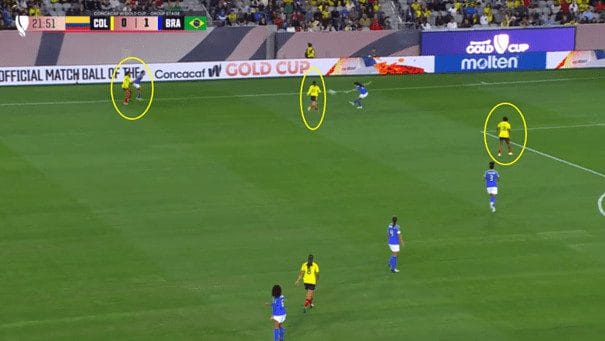
This is a prime example of Colombia’s effective pressing.
Caicedo, who started the press, forced the opposition to play one way and then cut off a pass back inside.
Usme made up a lot of ground to put the opposition’s centre back under immense pressure.
Daniela Arias pressed up extremely high to mark the only option the player on the ball had.
This forced a long clearance, which Colombia easily won.
Colombia are even more impressive when it comes to defending in their own half.
They have an excellent understanding of how to provide cover for one and another to help them defend against dangerous attacks.
In the 2023 World Cup, Colombia made the second-most number of tackles in the defensive third.

Transitions
Colombia’s defensive work rate also can be spotted during the defensive transition.
They have a great understanding of how to keep their structure and defend effectively against overloads.
Colombia also have an extremely combative nature and are more than willing to commit professional fouls to stop counterattacks.
They had the most yellow cards in both the previous Gold Cup and World Cup.
However, they don’t just drop back and invite pressure.
Colombia often deploy a counter press after losing possession high up the pitch.
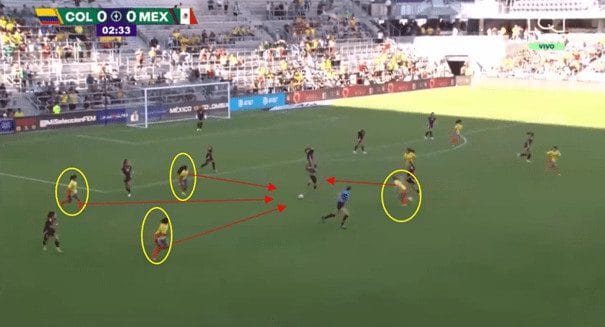
After losing the ball, Colombia press intensely to prevent the first pass forward after the transition.
Multiple bodies get around the ball, which results in Colombia winning the ball back in the attacking third of the pitch.
When transitioning from defence to attack, Colombia and can keep the ball well, even when coming under a counter press themselves.
When they break forward on the counter often, they are relying on the pace and trickery of their forward players to create something.
In the 2023 World Cup, Colombia had the third-highest amount of 1v1 dribbles completed.
Yet decision-making can often be a killer to Colombia’s counterattacks.
Their fast forwards can often over-dribble, allowing the defending team to recover.
The execution and timing of their passes can also be a factor in fulfilling their potential on the counter.
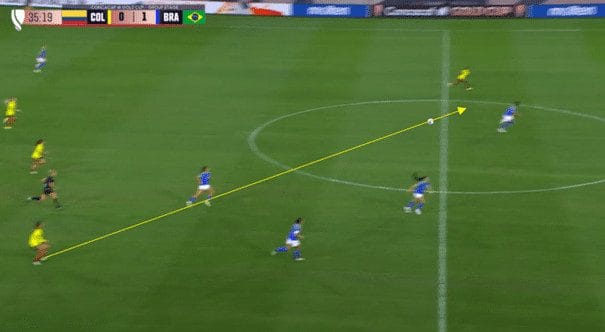
In this scenario, Colombia have won the ball back, and Caicedo is in a promising position, threatening in behind.
Unfortunately, Bedoya’s ball is poor and goes straight to the opposition.
Defenders
As highlighted, the defensive unit works effectively together when put under pressure.
Vanegas, Carabalí, Daniela, and Carolina Arias will significantly influence Colombia’s success.
Defensively, Brighton defender Jorelyn Carabalí will be critical.
She has a percentile rank of 99 for tackles per 90 compared to centre-backs in the WSL.
Offensively, Colombia’s defence is calm on the ball, yet they must ensure that no unforced errors occur that lead to easy goals.
The full-backs will also be vital in attacks in the final third, with Manuela Vanegas having a percentile rank of 84 for shot-creating actions by full-backs in Liga F this season for Real Sociedad.
Midfielders
It will be interesting to see how Colombia’s midfield adapts throughout the tournament.
Against New Zealand, a nation Colombia will be favourites to beat, I believe Paví or Usme will be used as a 10 with Izquierdo and Montoya playing in a double pivot.
This will give Colombia greater attacking options on the pitch to win the game against weaker opposition.
However, despite being weaker on the ball, Bedoya will be vital against France and Canada.
In tightly contested games, her ability to break up play will be key.
Bedoya won the fourth most tackles in the World Cup and will provide much-needed protection to the defence.
Forwards
Offensively, there’s much to be excited about and plenty of options for Marsiglia to pick from.
Caicedo and Usme will deservedly have a lot of attention placed on them.
However, Ramírez could be one to watch when she is used.
She has incredible physical attributes that she uses to cause havoc to defences.
She has a percentile rank of 98 in successful take-ons, touches in attacking box and progressive passes received.
Despite the usual fluidity that Colombia’s front three normally have, Ramírez could provide a vocal point at difficult points in the tournament when a target forward is needed.
Defensively, due to Colombia’s pressing, a variety of options will need to be used.
In a 4-3-3, an aggressive approach will be taken regardless of the opponent.
Yet when playing in a 4-4-2 or 4-2-3-1, Colombia have also been effective before defending with a front two of Usme and Ramírez, particularly against teams who aim to find their 6 in the build-up, screening balls through the middle of the pitch.
Key Player
Caicedo announced herself internationally at the last World Cup, with the 19-year-old scoring some incredible goals.
Now, after her first full season in Spain, the Real Madrid star is looking to step up and become a leader for her country.
With Caicedo taking up a position on the left wing, she often drifts to get on the ball and then uses her speed and close control to glide past opponents.

Here, Caicedo has moved inside and received the ball between the opposition’s midfield and defensive lines.
She takes the ball on her back foot and begins to drive towards goal.
She then passes the ball off to an advancing teammate.
Many of Caicedo’s stats would point to these obvious strengths.
She has a percentile rank of 97 for progressive carries in Liga F this season when compared to other attackers.
She also ranks 93 for successful take-ons and 86 for shot-creating actions.
Her end product has been decent as well, with a combined goal and assist tally of 9.
Caicedo does have an incredible work rate as well.
She proves that by having a percentile rank of 84 for tackles made in the defensive third.
This work rate is also shown in the way she presses opponents intensely in the final third.
Caicedo has a lot of responsibility placed on her young shoulders.
Despite this, I predict she will be one of the standout performers of the tournament and put in more memorable performances that will only raise her profile.
Tournament Prediction
I believe Colombia can have another positive tournament.
However, we don’t feel they have the necessary tools to win the competition.
In what is a tricky group, four points should be the minimum expectation that Marsiglia will have of his team.
A win against New Zealand and at least one point from their games against Canada and France should be enough to see them through to the quarter-finals.
Finishing runner-up should give them a quarter-final draw against Group B’s runner-up.
This is where we see Colombia finishing the tournament, as they may lack the firepower to help them overcome the bigger nations.
Yet it won’t be a surprise if, against the odds, they progress to the semi-final.

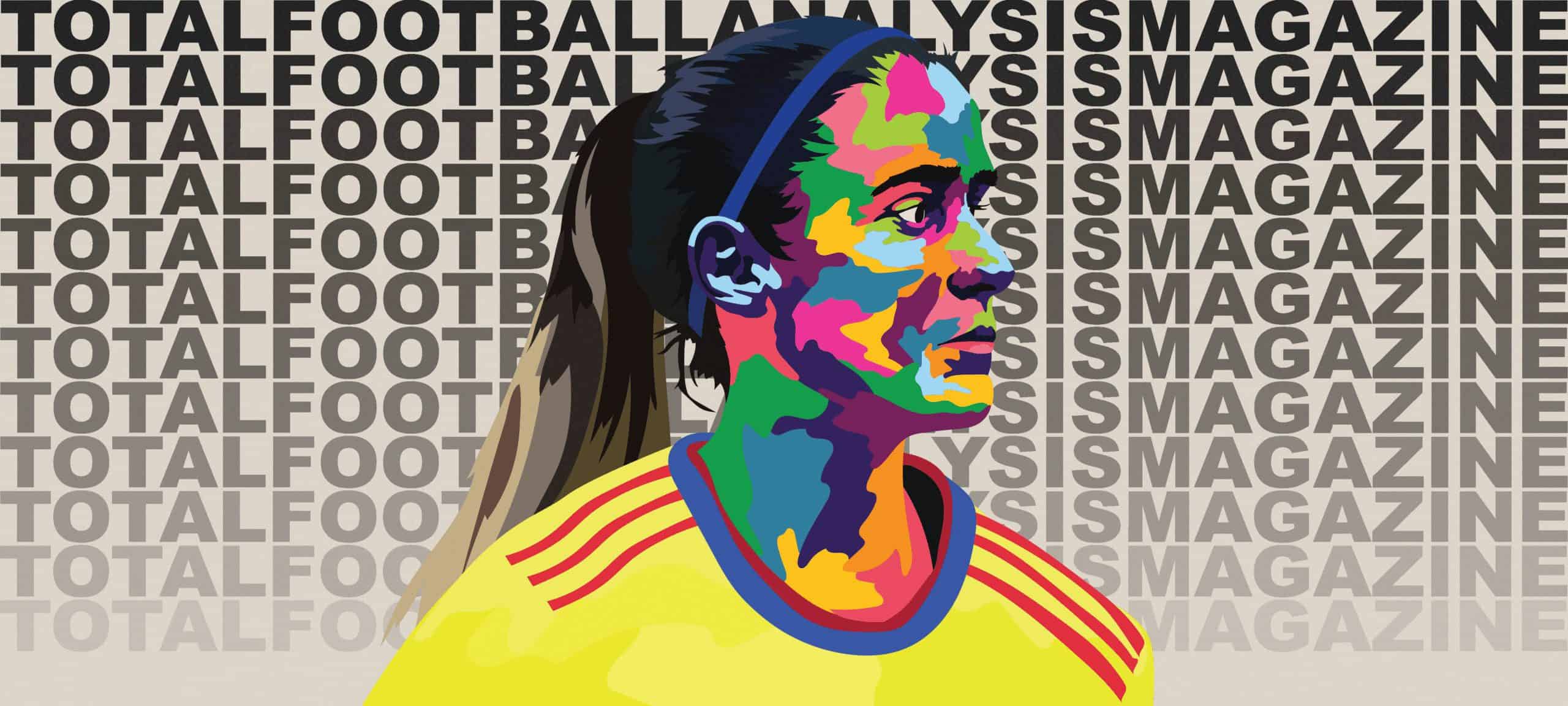



Comments